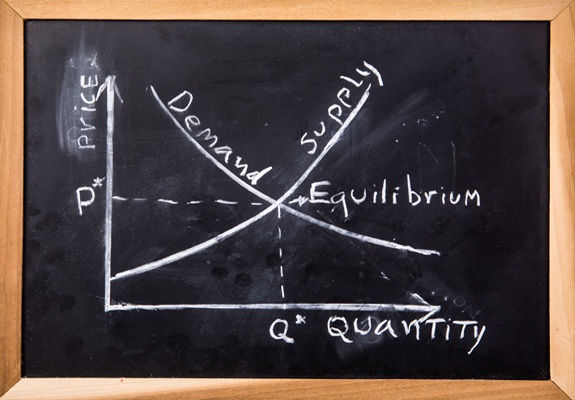Data are crucial in the demand planning process. For quite some time, organizations have been applying customer order and shipment data to optimize their short-term demand forecast. And also the integration of POS (Point of Sale) data is already a commonly-known practice. However, recently we have noticed some other trends which can further improve the quality of the short-term demand forecast and related to it, the demand planning:
- Demand sensing allows to model and forecast demand changes more frequently
- More and more extra data input from different sources is possible
- Data are increasingly used to not only predict the demand, but also to shape it
Furthermore, in a world that is overwhelmed with data, using and integrating the right data is one thing. Equally important, though, is overcoming a challenge that has been known for several decades: how to convince all parties in the supply chain that sharing data leads to a win-win situation? Read on to discover some best practices.
Sensing the data tsunami
Today, a lot of companies are still interpreting their demand, based on prior sales history and shipment and order data, instead of sensing the demand throughout their supply chain. However, past sales is often a poor predictor of future sales, certainly in a volatile market with demanding customers. Demand sensing offers an answer as it provides the agility to capture real-time market events. In essence, solutions that sense demand will gather downstream data with a minimal latency in order to understand what is being sold, who is buying products and how different products are impacting the demand.
In the digital age, sufficient downstream data is available to get a very complete view of current demand and to be able to make an accurate forecast. The exponential investments in sensing technologies, such as smart sensors to record temperature, pressure, movements, etc., are attributing to the popularity of sensing demand. Furthermore, this type of models can tap into the exploding volume of unstructured data, such as the chatter on social media, and combine it with POS data, weather forecast and even Nielsen-data. The latter refers to data on the market share and more general trends, e.g. discovering patterns in the global demand for sweets.
Taking data to the next level
Once companies have a good view of their real-time demand via demand sensing, they can not only adjust their forecast much faster and plan the demand better, they can also actively influence the demand so that it benefits the planning. The process whereby companies steer the demand to match the planning or to optimize the supply chain process, is better known as demand shaping. Organizations are then using sales and marketing tactics such as pricing policies, sales promotions, new product launches, sales incentives or marketing programs to increase the market share and revenue growth.
To give a concrete example: a candy producer will use a demand forecast to launch a new product. By sensing the demand it will get real-time insights into the market reaction. If the producer predicted to sell 100 units by the end of the month, but in week 2 they’ve only sold 10 units, he can decide to start an intensive marketing campaign to yet increase demand. Based on the sensing data, an organization can thus proactively shape the demand.
Integration and automation are key
A better information flow allows organizations to be more proactive. However, the traditional demand forecasting and planning tools were not developed to sense demand patterns other than returning cycles and seasonality or to integrate data from so many different sources. How to measure, for example, demand sensing and shaping activities in an Excel-sheet? Today, many companies realize this and they are therefore willing to invest in best-of-breed demand forecasting and planning tools, such as Arkieva to name one.
These integrated, automated systems allow to model and forecast the changes in demand on a frequent basis. While forecasting is still often done on a monthly basis (or longer), the integration of demand sensing and shaping models into robust solutions will increasingly make it possible to forecast the demand on a weekly and even daily basis.
Moreover, the automated demand forecasting and planning tools give access to a lot of extra functionality, such as running ‘what if’ scenarios, receiving alerts or executing profound sensitivity analysis. The latter is fairly new and allows companies to measure the upstream impact of social media messages.
Collaboration proves its worth
Manufacturers can collect more and more downstream data without the help of the retailer, think of social media and sensor data. POS data is still a key source in the sensing and shaping process, though. But that’s exactly where the shoe pinches. Extensive cooperation between producers and retailers has been high on the supply chain agenda for years, but is still difficult to put into practice. A lack of trust lies at the root of that.
Today, we see in more and more organizations the emergence of a kind of intermediary function – the logistics account manager – to tackle the trust problem. This person will work on the relationship with the retailer, not from a sales perspective, but from a financial one. The logistics account manager provides answers on how a better information flow can create a win-win situation for both parties.
The input of accurate data into the sensing and shaping process will enable all parties in the supply chain to better deal with unexpected sales opportunities, free up cash flow by cutting inventory and lower the ‘cost to serve’. Finally, a good short-term demand forecast and planning is so much more than ‘fingerspitzengefühl’, it’s the sum of many parts in the supply chain working together in the long term to reach a common goal: making the business better.
Would you like more information about sensing and shaping demand?
Watch the Arkieva webinar "B2B demand sensing avoiding bullwhip effect"
& / or
Watch the Arkieva webinar "using predictive analytics to drive sales"
